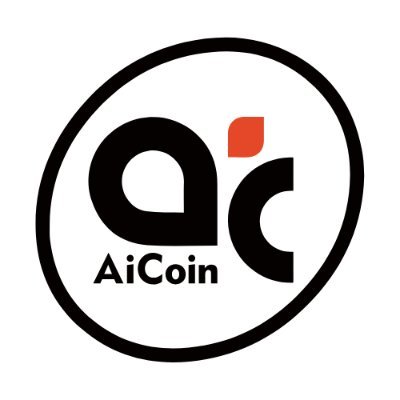Tether Invests $10.8 Million in Be Water to Revolutionize Digital Content
Tether Inc. has made a strategic investment in Be Water, a media company specializing in film, audio, and live content distribution. Through a $10.8 million (€10 million) capital increase, Tether will acquire a 30.4% stake, supporting Be Water’s vision of integrating technology with content creation.
This investment reflects Tether’s broader strategy of diversifying beyond financial technology. With over $13 billion in 2024 profits and $113 billion in U.S. Treasury holdings, Tether has already expanded into various sectors, including a $775 million investment in video platform Rumble and a $200 million stake in Blackrock Neurotech.
“At Tether, we recognize the power of storytelling and the importance of independent media in shaping informed societies. Our investment in Be Water aligns with our vision to support technology-driven innovation across industries,” said Paolo Ardoino, CEO of Tether.
With Tether’s backing, Be Water plans to develop advanced digital infrastructure, enhance investigative journalism, and expand globally. This partnership aims to leverage blockchain and digital tools to revolutionize media distribution, further cementing Tether’s role in driving technological innovation across industries.
免责声明:本文章仅代表作者个人观点,不代表本平台的立场和观点。本文章仅供信息分享,不构成对任何人的任何投资建议。用户与作者之间的任何争议,与本平台无关。如网页中刊载的文章或图片涉及侵权,请提供相关的权利证明和身份证明发送邮件到support@aicoin.com,本平台相关工作人员将会进行核查。
The Minister Of Digital Affairs Paves The Way For Bitcoin Mining In France
What if France became a hub of innovation for Bitcoin? While the debates on cryptocurrency often oscillate between fascination and distrust, Clara Chappaz, the delegated minister for Digital Affairs, opens an unprecedented door: exploiting French nuclear power to mine Bitcoin. A bold proposal, blending economic pragmatism and energy sovereignty. During a visit to Ledger, a French leader in blockchain security, the minister outlined a vision where the Hexagon could tame the paradoxes of Bitcoin. Not without nuance.
The idea is not new, but it is gaining credibility. EDF, a public energy giant, is drowning under a debt of 65 billion euros. However, its nuclear plants sometimes produce an unused surplus of electricity…
Why not convert this energy into Bitcoin? A simple calculation: cryptocurrency mining valorizes excess electricity, generating instant revenues. Marine Le Pen mentioned it in Flamanville, but the government remained silent. Until now.
Clara Chappaz breaks the taboo. “This subject has been captured by extreme fringes of public debate, while it deserves serious analysis”
No noisy communication, but a thorough study. The recent appointment of Bernard Fontana at the head of EDF offers a fresh perspective. “We need to evaluate this without ideology, ask the right economic questions”, she insists . A pragmatism that contrasts with traditional postures.
There remains a pitfall: the image of Bitcoin, often associated with speculation or pollution. The minister knows this. “It’s inter-ministerial, not just digital”, she slips.
An implicit admission: to convince Bercy or the Energy Transition, figures will be needed, not slogans. What if France became a low carbon mining laboratory? The equation is tempting… but fragile.
If Bitcoin crystallizes economic hopes, it also questions French digital sovereignty. Another challenge awaits Clara Chappaz: reconciling innovation and regulation, between digital euro and administrative sluggishness.
The digital euro is advancing, but fears persist. Christine Lagarde (ECB) sets October 2025 as the deadline for its launch.
Behind the scenes, Clara Chappaz listens to French stakeholders. The protection of personal data is crucial, she reminds.
A message to Brussels, where the project struggles to reassure. The minister promises dialogue spaces to carry local voices. But Europe is moving slowly, and France must play collectively.
“Let’s organize ourselves!”, she urges the ecosystem. Specifically, French companies need to unite their positions, despite their differences.
A challenge: how to reconcile pro-Bitcoin start-ups and traditional banks? The minister sees herself as a mediator, “a bridge between France and Europe.” A key role, as the European regulator (MiCA) imposes strict rules.
Another grievance: the delays from the AMF. PSAN approval requests drag on, hampering innovation. Clara Chappaz tackles the subject head-on. “I’ve discussed this with the AMF. Let’s simplify, let’s draw inspiration from abroad.”
A veiled criticism towards an administration that can sometimes be paralyzed. For the minister, accelerating procedures is vital. Can France become a crypto hub while respecting standards? The balance is delicate.
Clara Chappaz embodies a new generation of decision-makers: tech-savvy, yet realistic. Her approach to Bitcoin? Neither idealism nor rejection, but a quest for added value made in France. Between nuclear mining and the digital euro, the road is fraught with obstacles.
But one certainty remains: France refuses to be a spectator in a society where cash could soon disappear .
Ripple CEO Pushes XRP Adoption in Talks with IMF and Swiss National Bank
Software and blockchain firm Ripple Labs is in the news following a recent interview with CEO Brad Garlinghouse. The CEO pushed the adoption of XRP while speaking at an event involving the International Monetary Fund (IMF) and the Swiss National Bank.
Edward Farina, CEO of Alpha Lions Academy, shared a short video on X, showing Garlinghouse presenting XRP’s capabilities before the IMF and Swiss National Bank. Farina commented that Garlinghouse destroyed Bitcoin while presenting the case for XRP.
In his presentation at the event, Garlinghouse mentioned that XRP was birthed by engineers who recognized Bitcoin’s (BTC) limitations. He explained that Bitcoin still has scalability challenges, with slow and expensive transactions. On the other hand, he said XRP is about a thousand times faster and offers cheaper transactions.
The Ripple CEO also addressed the issue of pre-funding in cross-border payments. According to him, the current system requires financial institutions to maintain capital reserves in different countries to facilitate international transactions. Garlinghouse argued that XRP is designed to eliminate these limitations by enabling global liquidity on demand.
Additionally, Garlinghouse outlined Ripple’s long-term vision for payments. He compared blockchain technology to the foundational technologies underpinning the internet, such as TCP/IP and HTTP.
Garlinghouse sees the possibility of blockchain networks facilitating a seamless exchange of value similar to these technologies. The CEO added that this transformation would create an “internet of value” where payments can move as efficiently as data.
He highlighted that traditional correspondent banking has left some countries and payment channels underserved. Garlinghouse, therefore, contends that XRP could fill this gap, democratizing access to liquidity and creating a more inclusive financial system.
Furthermore, he cited a real-world scenario of freelancers in developing markets who struggle to receive small international payments due to high fees and banking restrictions. According to Garlinghouse, XRP can handle this issue by allowing small payments to flow between borders.
In a previous article we discussed , an NYU Professor mentioned that Ripple’s involvement in cross-border settlement started in 2012. This emphasizes the firm’s position as a leader and innovator in the industry.
The post from Farina got mixed responses from the online crypto community. Some agreed with Garlinghouse’s assessment that XRP offers real-world utility with greater speed, lower costs, and better scalability than Bitcoin.
One user even said Bitcoin is a distraction from the real disruption in financial services. “He’s not wrong. Bitcoin opened the door, but XRP was built to walk through it with real utility. Faster, cheaper, more scalable,” added @RebelRepublicX on X.
Others, however, think Garlinghouse is pushing too hard to promote XRP as a financial instrument. While they acknowledged XRP for its speed, they said the coin lacks backing.
Overall, Garlinghouse’s comments in the video reflect Ripple’s vision to position XRP as a practical solution for global payments.
As of this writing, XRP price was trading at $2.37, down 3.7% over the previous day. This decline comes amid a broader market bearish sentiment. As we covered in our latest report, analysts forecasted that XRP could hit $8 to $10, driven by Fibonacci models and Bitcoin’s rally.


 Najniższa cena
Najniższa cena Najwyższa cena
Najwyższa cena 












































